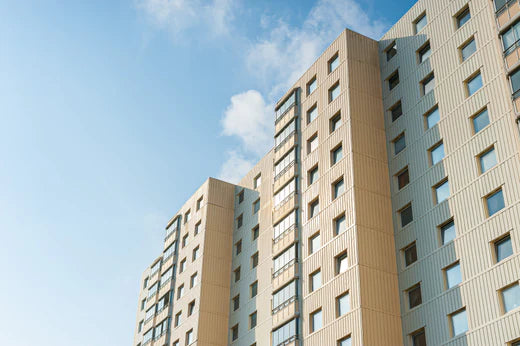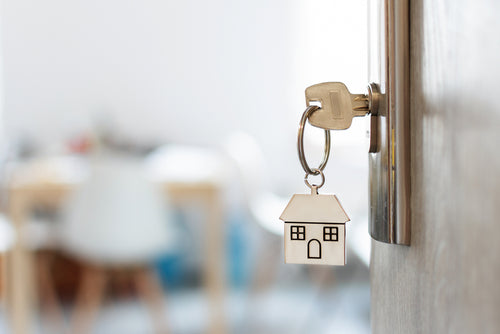
General information about social housing
If problems arise in your tenancy, Lejernes Retshjælp also provide help you if live in social housing.
There are about 600,000 social housing units distributed in all the country's municipalities, and they are offered to everyone. As something unique, social housing are run on the basis of resident democratic principles, and therefore it is the tenants with their democratic rights who makes the decisons.
Public housing is regulated by the Act on Public Housing and the Act on Rent of Public Housing, as well as a number of guidelines and executive orders that supplement the laws. This means that the law is not in all areas consistent with the Rent Act.
Please see more information about moving in- and out and also rehousing when you are a tenant in social housing.
Moving in
In connection with moving in, there will be an inspection where you and the housing organization will attend and a move-in report must be prepared.
The report contains your and the housing association's comments on the condition of the apartment. The errors and deficiencies noted in the move-in report are not liable for when you move out.
You only have 14 days from moving in to complain about additional errors and defects in the rented property. The list of defects must be handed over in writing to the housing association within the 14. Days.
Maintenance
There are two maintenance schemes, an A scheme and a B scheme. It is possible for you to check in the department's maintenance regulations which arrangement and which rules on maintenance and refurbishment have been decided in the department. You will also be able to see on your rental contract which scheme applies for your apartment.
Scheme A
You have to take care of interior maintenance yourself in terms of whitening, painting, wallpapering and floor treatment.
Scheme B
When you are moving in, the lease is not newly renovated
The landlord has the interior maintenance duty, i.e. the housing organization must provide the necessary maintenance of the home, such as painting ceilings, wallpapering or painting walls, woodwork and radiators as well as floor treatment so that the home does not deteriorate beyond normal wear and tear.
There is a maintenance account which you as a tenant are paying into when paying your rent. As a rule, it is you who can demand that necessary maintenance be carried out in the lease when the expenses can be covered by the maintenance account.
In practice, you organise the work yourself and you are reimbursed for the expenses by the housing association. It is a requirement that the work is carried out correctly in terms of craftsmanship, therefore you are not reimbursed for your own work. Always remember to save invoices for work done. Always inform your Housing organization before you organize the work. The account closes the moment you terminate your lease so make sure to have done any necessary work before terminating the lease so you wont be liable for any damages in the lease.
Moving out
Scheme A
When moving out, a normal renovation is carried out at your expense or you pay a normal renovation amount set by the landlord and which the subsequent tenant can use for renovation. Normal refurbishment includes whitening, painting, wallpapering and cleaning.
The social housing gradually takes over the costs of normal renovation over a maximum period of 10 years. When the housing department has fully or partially taken over the cost of normal renovation, you shall not be liable for the renovation, except for the costs of default or negligence by your part.
Scheme B
If there has been no default, you will not have any expenses for refurbishment when moving out. The new tenant must accept refurbishment that can be done for the amount taken over in the maintenance account.
However, it is very often that the landlord makes a claim for renovation, on the basis of default or negligence by your part, as the lease has not been renovated for a long time. In this regard, you can contact us and we will look into the case.
Vacancy report
You must be summoned in writing to the inspection of the lease with 1 week's notice and the inspection must be held no later than 2 weeks after moving out.
Within 2 weeks of the inspection, you must receive a copy of the report with an estimate of the estimated cost of the renovation and it must be clearly stated what is the default.
The final statement must be sent to you without undue delay. In the final statement of total refurbishment costs, your share of the costs must not exceed the estimate by more than 10 percent.
Rehousing
Below is a brief review of residents' rights in connection with rehousing.
Temporary rehousing
Temporary rehousing happens when master plans or renovations for a fixed period of time make you unable to live in your home. The requirements for your rehousing accommodation must be appropriate so that it is reasonable in relation to the number of people in the household and the duration of the resettlement.
This means that you may risk being rehoused in a pavilion or hotel depending on the length of the work carried out.
Permanent rehousing
In connection with new master plans for social housing, it often happens that there are leases that need to be thoroughly renovated or demolished. If you are terminated due to rebuilding or demolition, you have the right to be rehoused. The permanent resettlement dwelling must be of an appropriate size, location, quality and appropriate equipment.






